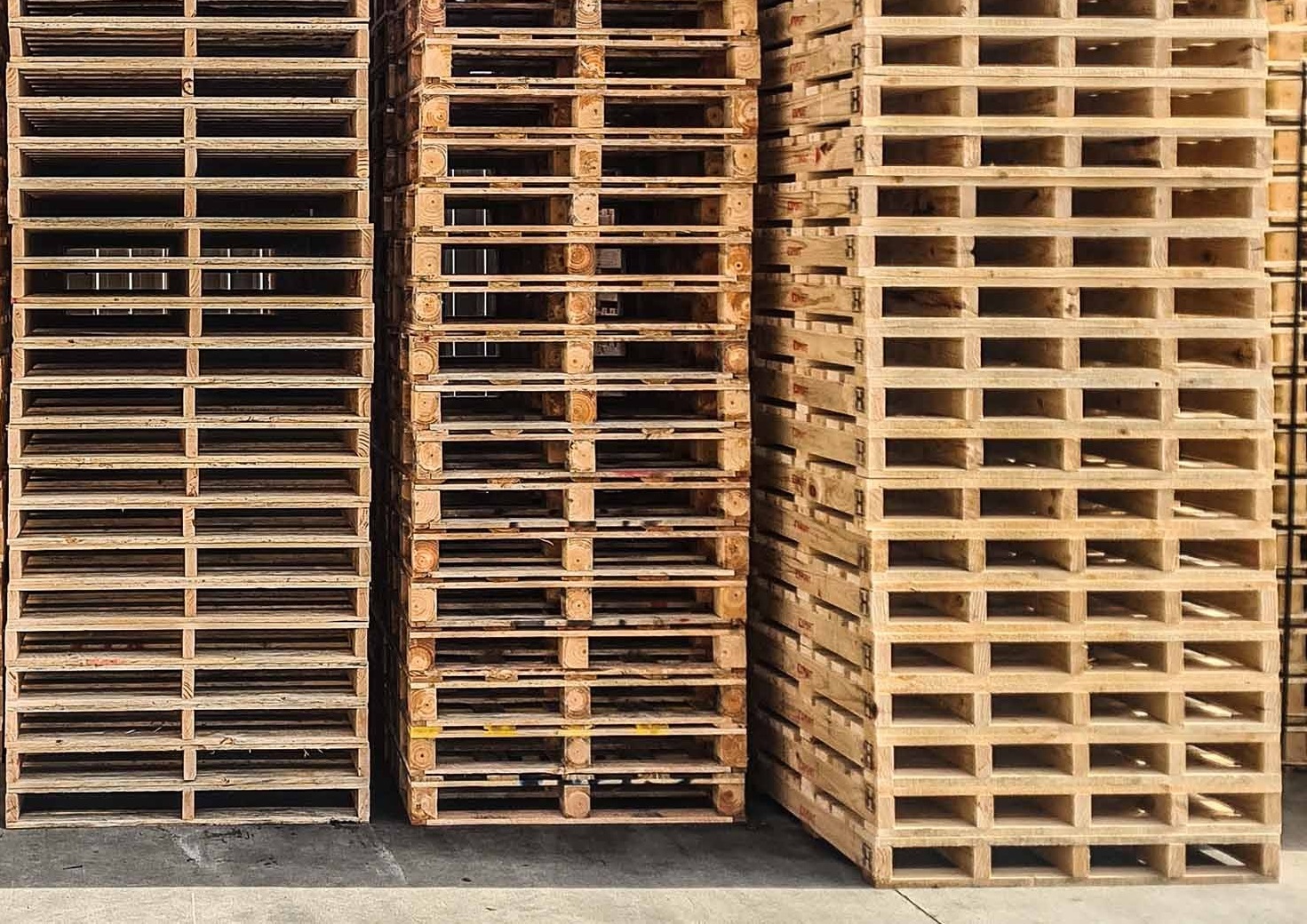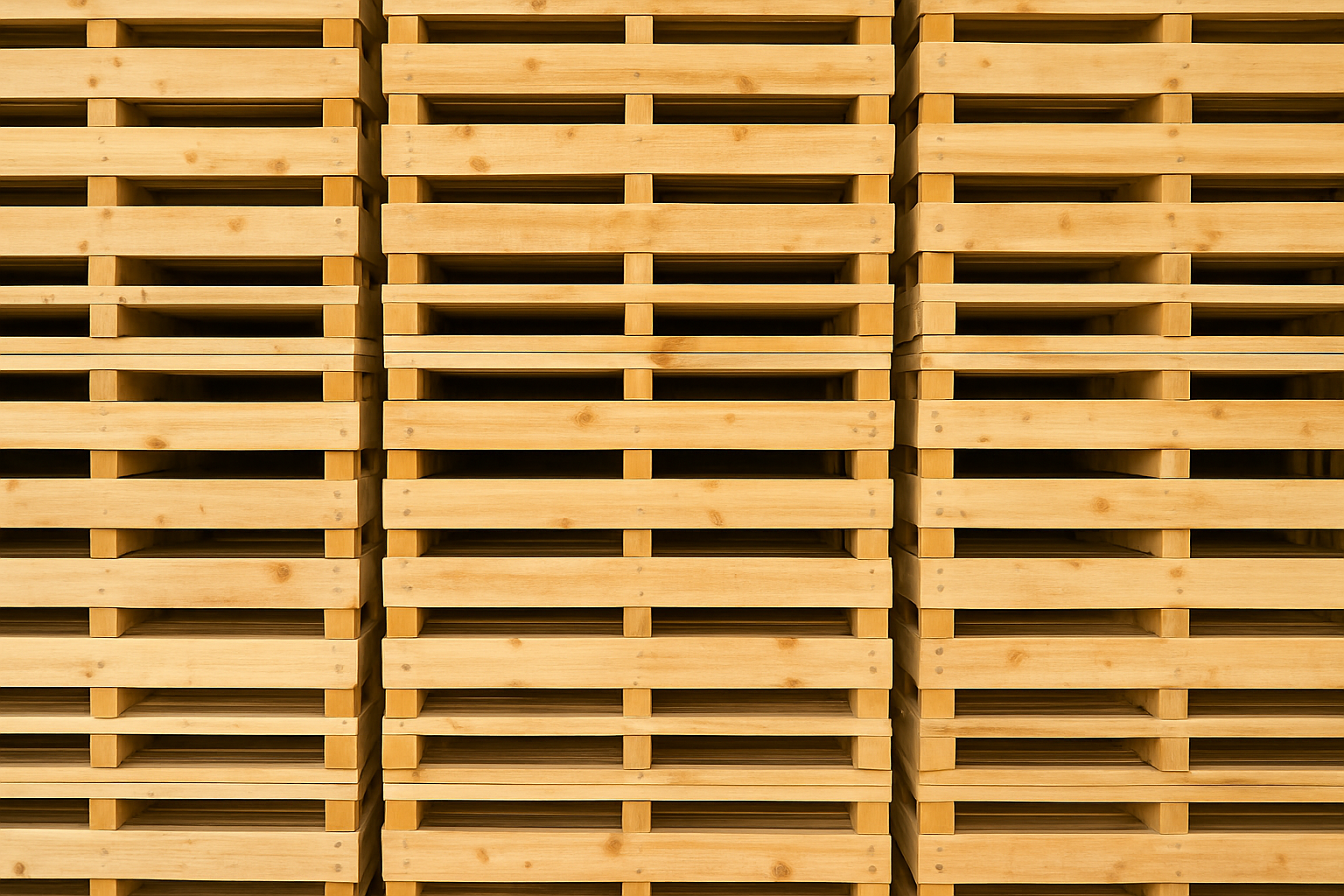Are Your Goods Safe and Secure, or Is the Wrong Pallet Choice Costing You?
Each successful supply chain is built on the quality and suitability of its pallets. From moving fragile items to bulky ones, the right pallets make all the difference between seamless operations and costly disruptions. A wrong choice might result in damaged products, insufficient storage, or a regulatory headache.
At Waterstone Pallets, we understand that sometimes business operations face a big dilemma: choosing the right pallet for their business. This guide will help you analyse your needs and select the right pallet to meet your logistical needs.
Why Choose the Right Pallet
Selecting a pallet is unlike choosing anything else to lay your goods on. This single decision reverberates through your supply chain. This is why it does matter:
Optimise Logistics and Reduce Costs
The right pallet will help maximise storage space, smooth the transportation process, and minimise handling time, which will mean big cost savings over time.
Protect Your Products
Suboptimal pallets can cause goods to shift or damage themselves in transit, draining money from your pocket and disappointing your customers.
Assure Regulatory Compliance
Exporting goods? Non-conforming pallets may be delayed in customs, or the entire shipment may be refused. Pallets like those provided by Waterstone Pallets ensure your packaging meets the relevant international standards.
Options Galore
Sometimes, a ‘one size fits all’ approach just doesn’t cut it, but at least it pays to know what your options are. Below are some of the different pallet types available at Waterstone Pallets.
Know Thy Specific Needs
Every business is unique, and so is its pallet requirement. To choose the right pallets, consider these key factors:
1. Product Type
- Size and Weight: Is your merchandise heavy, lightweight, or oversized?
- Fragility: Are they fragile and would it need special support during movements?
- Industry-Specific Requirements: For example, the pharmaceutical industry requires clean, light-duty pallets, while automotive ones need heavy-duty ones.
- Static or Dynamic load: If the item is rigid on it’s own, it’s a static item. If it has flex and movement when lifted, then it is a dynamic item. Being a static or dynamic product will change the design of the pallet. A dynamic load will need to be more support, the pallet will require more reinforcement.
2. Storage and Handling
- Purpose: Are the pallets to be used mainly for transit, storage, or a combination of both?
- Environment: Will they be located indoors or outdoors? Perhaps outdoor storage would require that the raw materials be treated or weather-resistant.
- Racking Systems: Using warehouse racking requires one to get pallets designed to work with your racking system.
3. Shipping Requirements
- Local vs. International: For exports, ensure pallets comply with standards.
- Regulatory Compliance: Heat-treated pallets prevent pest infestation and are acceptable according to international shipping standards.
- Cost Efficiency: Lighter-weight pallets can reduce shipping costs while maintaining durability.
Types of Pallets and Their Applications
We at Waterstone Pallets have a wide portfolio of pallets for numerous applications.
1. Standard Pallets: Flexibility and Reliability
Standard pallets form the backbone of many industries. They are very versatile and serve companies with standard packaging needs.
The features are as follows:
- Standard Dimensions: Accommodate most merchandise
- Light but Tough: Hold small to moderate weight
- Economic: Always there for everyday freight.
2. Custom Pallets: For Your Need
Where the standard size is not suitable, custom pallets come in. These pallets are designed to consider specific product dimensions, weight requirements, or industry-related challenges.
The benefits are as follows:
- In transit, it ensures the product’s safety.
- Enhancing effectiveness in logistics and saving on wasted space
- Must be applicable for fragile items or those with irregular shapes
3. Export Pallets: Complying yet Efficient
Pallets must meet a very strict international standard for exporting goods. Waterstone Pallets are certified to meet the ISPM15 standard for compliance.
The benefits are as follows:
- Heat-Treated Timber: Comply with international phytosanitary requirements.
- Lightweight Options: Reduce shipment costs without compromising strength.
- Customisable Dimensions: Meet your export needs.
4. Euro-style Pallets: Standardised for European Markets
If your products find their way to Europe, then Euro pallets are a must-have. Their standardised dimensions make sure they fit in the European logistics system.
The key features are:
- Accepted in all European markets
- High Load Capacity: Can be used for heavy-duty applications.
- Designed to fit into European racking systems.
5. Racking Pallets: Built for Warehousing
Racking pallets has become very essential in businesses where the operations of the warehouse are enormous. Such pallets ensure stability and safety and utilise space to a maximum.
Why Racking Pallets?
- Strong and durable to bear heavy-duty loads.
- Designed to be safely integrated with racking systems.
- Assist in maintaining organisation and accessibility at storage facilities.
How to Choose Pallets
1. Durability and Material
To make the proper selection, consider the following key factors:
- Wooden Pallets: Cheap and can be repaired.
- Plastic Pallets: Sanitary, weather elements resistant, and pricier. Not recyclable or repairable.
- Metal Pallets: Use is suited for high-end cases or in specialised settings. Expensive.
2. Cost Effectiveness
Balance your initial capital expense against your long-term returns. Reusable pallets are more expensive on a one-time investment but yield a high return on investment in the longer term.
3. Sustainability
Use green options. For example, wooden pallets are fabricated from renewable resources and can be reused and recycled.
4. Reliability
Operate with a supplier like Waterstone Pallets that scores high on a scale related to product quality, timely delivery, and customer service.
How Waterstone Pallets Can Help
At Waterstone Pallets, we have been perfecting the art of crafting and delivering high-quality timber pallets. Our team has more than 40-years industry experience. Here is why we are the best choice for your business:
- Full-service company: We do everything from design to heat treatment.
- Large Order Capacity: We have massive stocks of timber material to suit the needs of small, medium, and large-scale companies.
The Fast Guide to Choosing the Perfect Pallets
Apply this checklist before you identify the right pallets to suit your needs:
- Evaluate Your Product: By size, weight, and fragility.
- Understand storage and handling requirements.
- Decide on shipment options: Local or International.
- Think of the material required and its durability.
- Then, approach a trusted supplier like Waterstone Pallets.
The right pallet will revolutionise your logistics, protect your product, and stretch your dollar. When clarity of needs is attained, sourcing from a reputable supplier guarantees that your supply chain performs best.
Looking for the perfect pallet in the market? Let Waterstone Pallets drive insight into your business and fantastic solutions for your needs.



